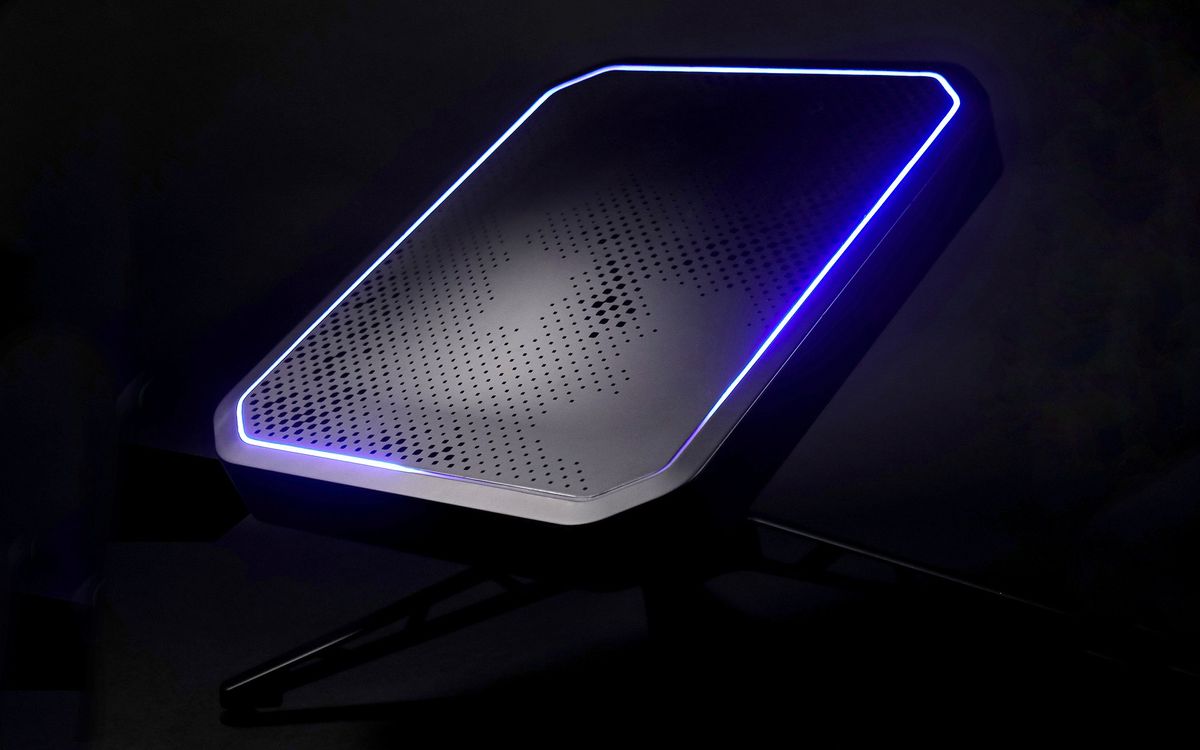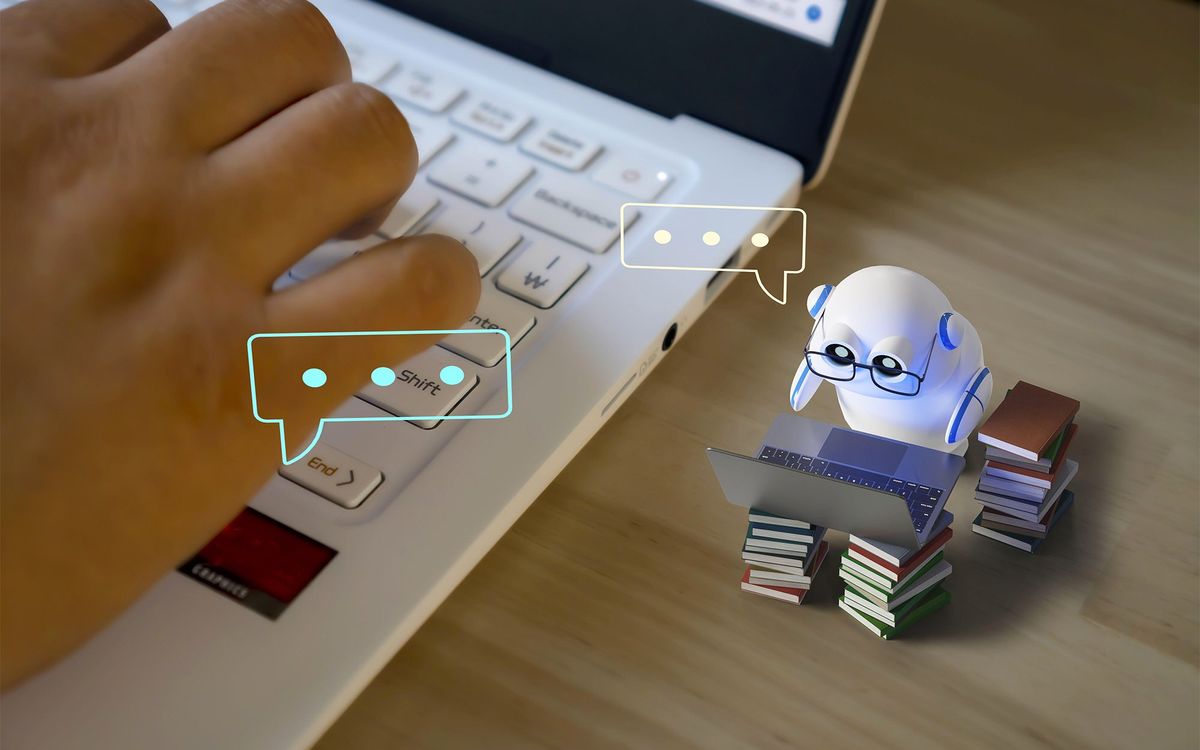Robert Kahn: The Great Interconnector
The 2024 IEEE Medal of Honor recipient envisioned the network of networks that became the Internet
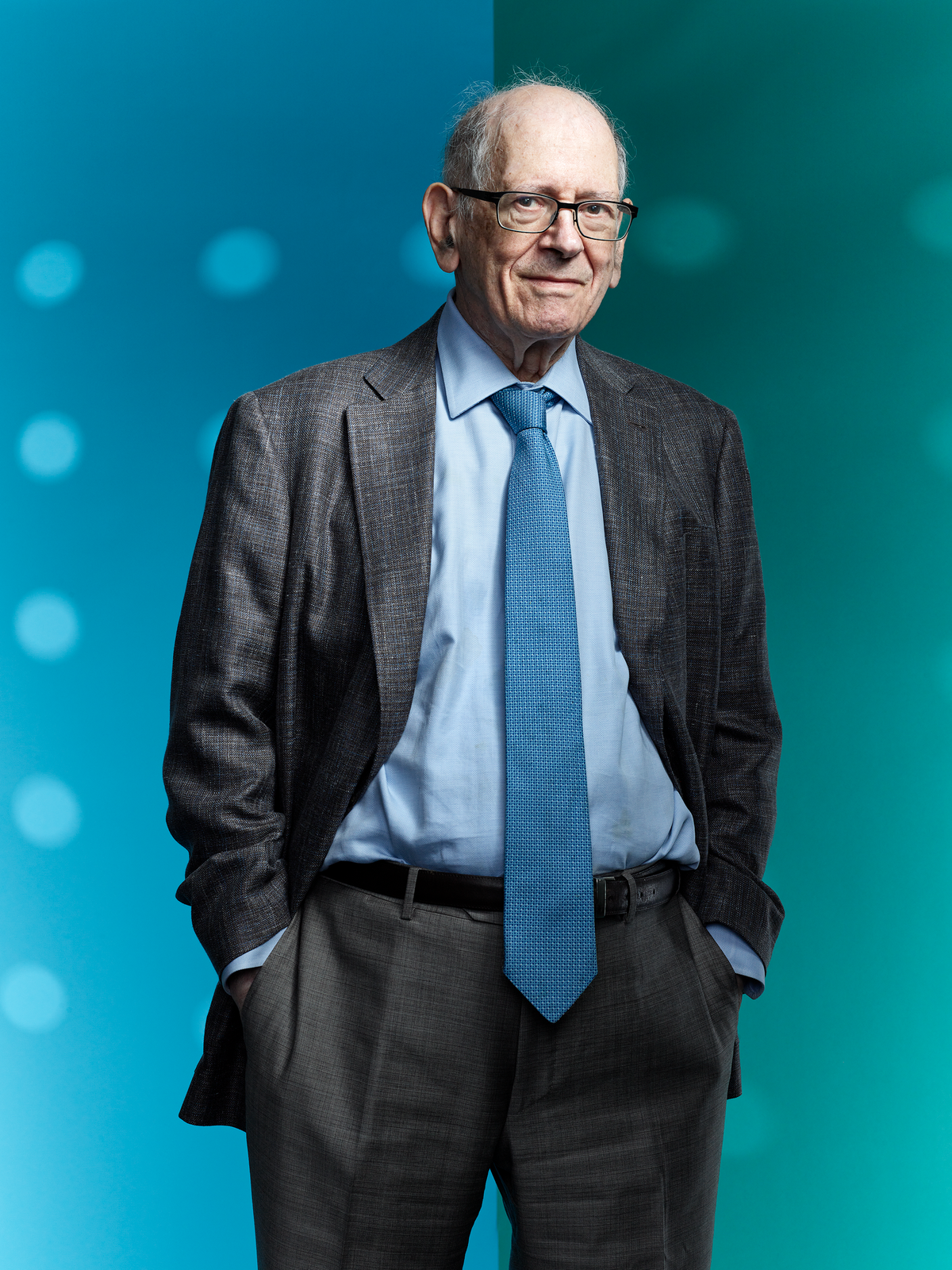
In the mid-1960s, Robert Kahn began thinking about how computers with different operating systems could talk to each other across a network. He didn’t think much about what they would say to one another, though. He was a theoretical guy, on leave from the faculty of the Massachusetts Institute of Technology for a stint at the nearby research-and-development company Bolt, Beranek and Newman (BBN). He simply found the problem interesting.
“The advice I was given was that it would be a bad thing to work on. They would say it wasn’t going to lead to anything,” Kahn recalls. “But I was a little headstrong at the time, and I just wanted to work on it.”
Robert E. Kahn
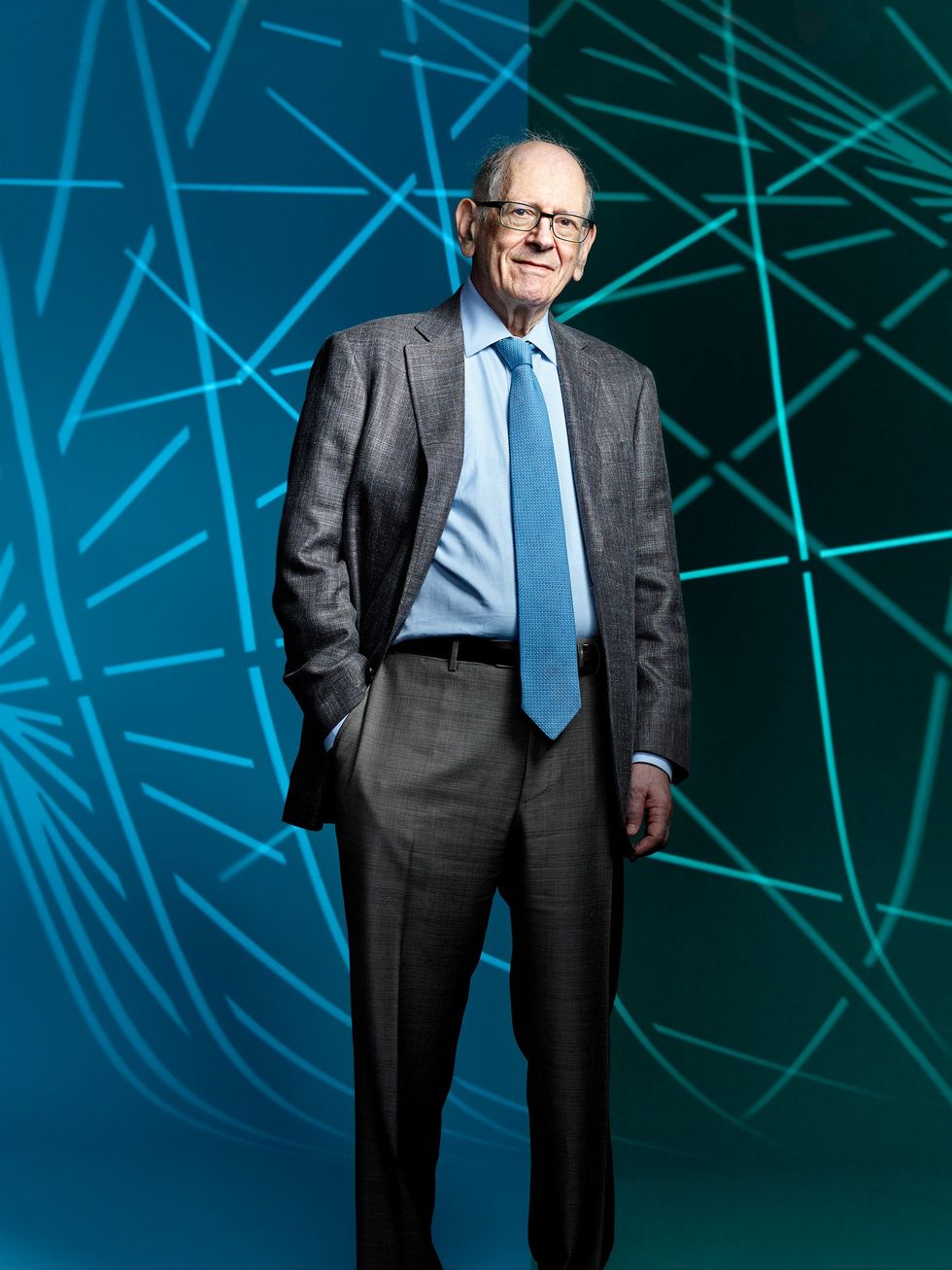
Peter Adams
Current job:
Chairman, CEO, and president of the Corporation for National Research Initiatives (CNRI)
Date of birth:
23 December 1938
Birthplace:
Brooklyn, New York
Family:
Patrice Ann Lyons, his wife
Education:
BEE 1960, City College of New York; M.A. 1962 and Ph.D. 1964, Princeton University
First job:
Runner for a Wall Street brokerage firm
First electronics job:
Bell Telephone Laboratories, New York City
Biggest surprise in career:
Leaving—and then staying out of—academics
Patents:
Several, including two related to the digital-object architecture and two on remote pointing devices
Heroes:
His parents, his wife, Egon Brenner, Irwin Jacobs, Jack Wozencraft
Favorite books:
March of Folly: From Troy to Vietnam(1984) by Barbara W. Tuchman, The Two-Ocean War: A Short History of the United States Navy in the Second World War (1963) by Samuel Eliot Morison
Favorite movies:
The Day the Earth Stood Still (1951), Casablanca(1942)
Favorite kind of music:
Opera, operatic musicals
Favorite TV shows:
Golf, tennis, football, soccer—basically any sports show
Favorite food:
Chinese that he cooks himself, as taught to him by Franklin Kuo, codeveloper of ALOHAnet at the University of Hawaii
Favorite restaurants:
Le Bernardin, New York City, and L’Auberge Chez Francois, Great Falls, Va.
Leisure activities past and present:
Skiing, whitewater canoeing, tennis, golf, cooking
Key organizational memberships:
IEEE, Association for Computing Machinery (ACM), the U.S. National Academies of Science and Engineering, the Marconi Society
Major awards:
IEEE Medal of Honor “for pioneering technical and leadership contributions in packet communication technologies and foundations of the Internet,” the Presidential Medal of Freedom, the National Medal of Technology and Innovation, the Queen Elizabeth Prize for Engineering, the Japan Prize, the Prince of Asturias Award
Kahn ended up “working on it” for the next half century. And he is still involved in networking research today.
It is for this work on packet communication technologies—as part of the project that became the ARPANET and in the foundations of the Internet—that Kahn is being awarded the 2024 IEEE Medal of Honor.
The ARPANET Is Born
Kahn wasn’t the only one thinking about connecting disparate computers in the 1960s. In 1965, Larry Roberts, then at the MIT Lincoln Laboratory, connected one computer in Massachusetts to another in California over a telephone line. Bob Taylor, then at the Advanced Research Projects Agency (ARPA), got interested in connecting computers, in part to save the organization money by getting the expensive computers it funded at universities and research organizations to share their resources over a packet-switched network. This method of communications involves cutting up data files into blocks and reassembling them at their destination. It allows each fragment to take a variety of paths across a network and helps mitigate any loss of data, because individual packets can easily be resent.
Taylor’s project—the ARPANET—would be far more than theoretical. It would ultimately produce the world’s first operational packet network linking distributed interactive computers.
Meanwhile, over at BBN, Kahn intended to spend a couple of years in industry so he could return to academia with some real-world experience and ideas for future research.
“I wasn’t hired to do anything in particular,” Kahn says. “They were just accumulating people who they thought could contribute. But I had come from the conceptual side of the world. The people at BBN viewed me as other.”
Kahn didn’t know much about computers at the time—his Ph.D. thesis involved signal processing. But he did know something about communication networks. After earning a bachelor’s degree in electrical engineering from City College of New York in 1960, Kahn had joined Bell Telephone Laboratories, working at its headquarters in Manhattan, where he helped to analyze the overall architecture and performance of the Bell telephone system. That involved conceptualizing what the network needed to do, developing overall plans, and handling the mathematical calculations related to the architecture as implemented, Kahn recalls.
“We would figure out things like: Do we need more lines between Denver and Chicago?” he says.
Kahn stayed at Bell Labs for about nine months; to his surprise, a graduate fellowship came through that he decided to accept. He was off to Princeton University in the autumn of 1961, returning to Bell Labs for the next few summers.
So, when Kahn was at BBN a few years later, he knew enough to realize that you wouldn’t want to use the telephone network as the basis of a computer network: Dial-up connections took 10 or 20 seconds to go through, the bandwidth was low, the error rate was high, and you could connect to only one machine at a time.
Other than generally thinking that it would be nice if computers could talk to one another, Kahn didn’t give much thought to applications.
“If you were engineering the Bell System,” he says, “you weren’t trying to figure out who in San Francisco is going to say what to whom in New York. You were just trying to figure out how to enable conversations.”
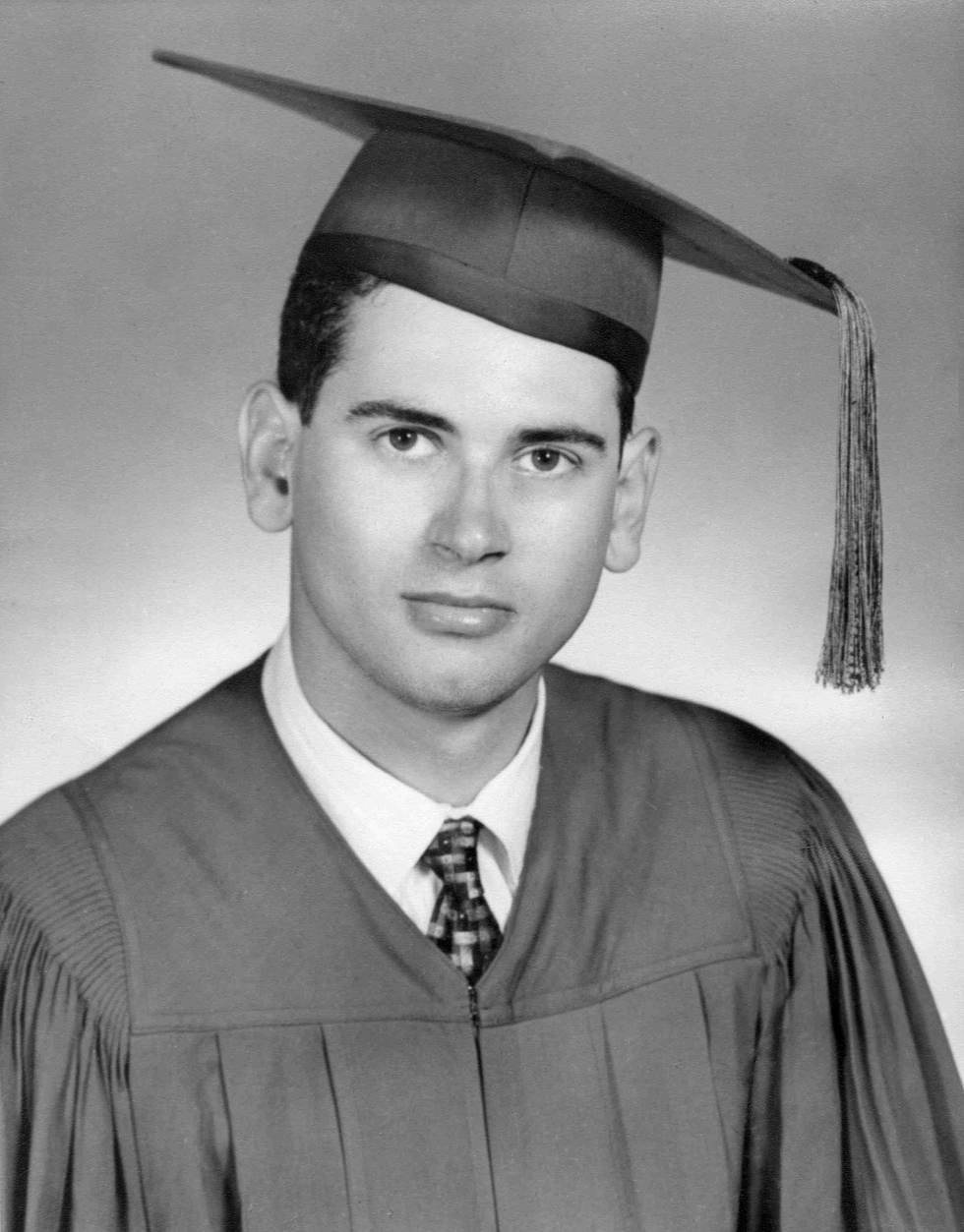
Kahn wrote a series of reports laying out how he thought a network of computers could be implemented. They landed on the desk of Jerry Elkind, a BBN vice president who later joined Xerox PARC. And Elkind told Kahn about ARPA’s interest in computer networking.
“I didn’t really know what ARPA was, other than I had seen the name,” Kahn says. Elkind told him to send his reports to Larry Roberts, the recently hired program manager for ARPA’s networking project.
“The next thing I know,” Kahn says, “there’s an RFQ [request for quotation] from ARPA for building a four-node net.” Kahn, still the consummate academic, hadn’t thought he’d have to do much beyond putting his thoughts down on paper. “It never dawned on me that I’d actually get involved in building it,” he says.
Kahn handled the technical portion of BBN’s proposal, and ARPA awarded BBN the four-node-network contract in January of 1969. The nodes rolled out later that year: at UCLA in September; the Stanford Research Institute (SRI) in October; the University of California, Santa Barbara, in November; and the University of Utah in December.
Kahn postponed his planned return to MIT and continued to work on expanding this network. In October 1972, the ARPANET was publicly unveiled at the first meeting of the International Conference on Computer Communications, in Washington, D.C.
“I was pretty sure it would work,” Kahn says, “but it was a big event. There were 30 or 40 nodes on the ARPANET at the time. We put 40 different kinds of terminals in the [Washington Hilton] ballroom, and people could walk around and try this terminal, that terminal, which might connect to MIT, and so forth. You could use Doug Engelbart’s NLS [oN-Line System] at SRI and manipulate a document, or you could go onto a BBN computer that demonstrated air-traffic control, showing an airplane leaving one airport, which happened to be on a computer in one place, and landing at another airport, which happened to be on a computer in another place.”
The demos, he recalled, ran 24 hours a day for nearly a week. The reaction, he says, “was ‘Oh my God, this is amazing’ for everybody, even people who worried about how it would affect their businesses.”
Goodbye BBN, Hello DARPA
Kahn officially left BBN the day after the demo concluded to join DARPA (the agency having recently added the word “Defense” to its name). He felt he’d done what he could on networking and was ready for a new challenge.
“They hired me to run a hundred-million-dollar program on automated manufacturing. It was an opportunity of a lifetime, to get on the factory floor, to figure out how to distribute processing, distribute artificial intelligence, use distributed sensors.”
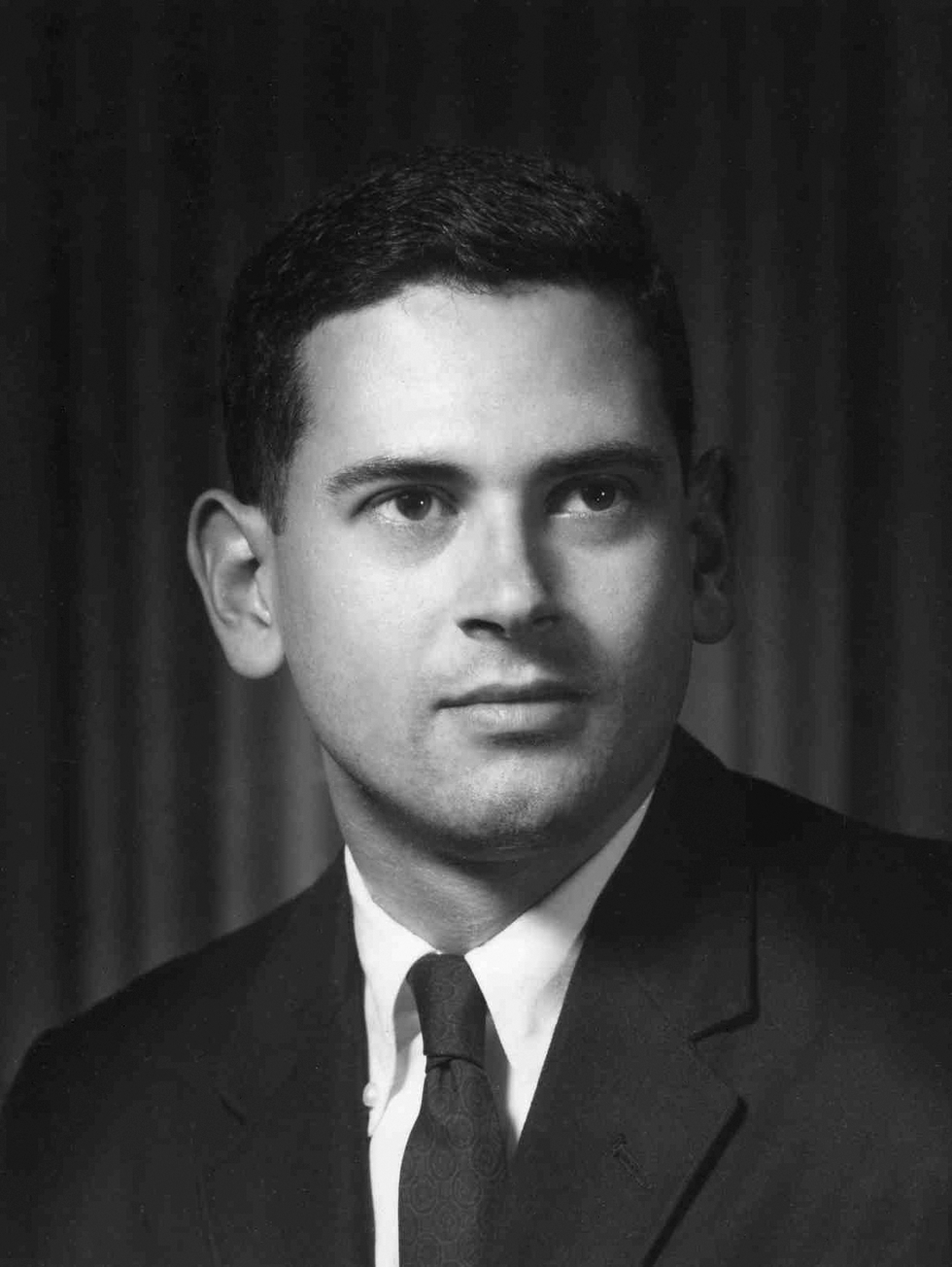
Soon after he arrived at DARPA, Congress pulled the plug on funding for the proposed automated-manufacturing effort. Kahn shrugged his shoulders and figured he’d go back to MIT. But Roberts asked Kahn to stay. Kahn did, but rather than work on ARPANET he focused on developing packet radio, packet satellite, and even, he says, packetizing voice, a technology that led to VoIP (Voice over Internet Protocol) today.
Getting those new networks up and running wasn’t always easy. Irwin Jacobs, who had just cofounded Linkabit and later cofounded Qualcomm, worked on the project. He recalls traveling through Europe with Kahn, trying to convince organizations to become part of the network.
“We visited three PTTs [postal, telegraph, and telephone services],” Jacobs said, “in Germany, in France, and in the U.K. The reactions were all the same. They were very friendly, they gave us the morning to explain packet switching and what we were thinking of doing, then they would serve us lunch and throw us out.” But the two of them kept at it.
“We took a little hike one day,” Jacobs says. “There was a steep trail that went up the side of a fjord, water coming down the opposite side. We came across an old man, casting a line into the stream rushing downhill. He said he was fishing for salmon, and we laughed—what were his chances? But as we walked uphill, he yanked on his rod and pulled out a salmon.” The Americans were impressed with his determination.
“You have to have confidence in what you are trying to do,” Jacobs says. “Bob had that. He was able to take rejection and keep persisting.”
Ultimately, a government laboratory in Norway, the Norwegian Defence Research Establishment, and a laboratory at University College London came on board—enough to get the satellite network up and running.
And Then Came the Internet
With the ARPANET, packet-radio, and packet-satellite networks all operational, it was clear to Kahn that the next step would be to connect them. He knew that the ARPANET design all by itself wouldn’t be useful for bringing together these disparate networks.
“Number one,” he says, “the original ARPANET protocols required perfect delivery, and if something didn’t get through and you didn’t get acknowledgment, you kept trying until it got through. That’s not going to work if you’re in a noisy environment, if you’re in a tunnel, if you’re behind a mountain, or if somebody’s jamming you. So I wanted something that didn’t require perfect communication.”
“Number two,” he continues, “you wanted something that didn’t have to wait for everything in a message to get through before the next message could get through.
“And you had no way in the ARPANET protocols for telling a destination what to do with the information when it got there. If a router got a packet and it wasn’t for another node on the ARPANET, it would assume ‘Oh, must be for me.’ It had nowhere else to send it.”
Initially, Kahn assigned the network part of the IP addresses himself, keeping a record on a single index card he carried in his shirt pocket.
“Vint, as a computer scientist, thought of things in terms of bits and computer programs. As an electrical engineer, I thought about signals and bandwidth and the nondigital side of the world.”—Bob Kahn
He approached Vint Cerf, then an assistant professor at Stanford University, who had been involved with Kahn in testing the ARPANET during its development, and he asked him to collaborate.
“Vint, as a computer scientist, thought of things in terms of bits and computer programs. As an electrical engineer, I thought about signals and bandwidth and the nondigital side of the world. We brought together different sets of talents,” Kahn says.
“Bob came out to Stanford to see me in the spring of 1973 and raised the problem of multiple networks,” Cerf recalls. “He thought they should have a set of rules that allowed them to be autonomous but interact with each other. He called it internetworking.”
“He’d already given this serious thought,” Cerf continues. “He wanted SRI to host the operations of the packet-radio network, and he had people in the Norwegian defense-research establishment working on the packet-satellite network. He asked me how we could make it so that a host on any network could communicate with another in a standardized way.”
Cerf was in.
The two met regularly over the next six months to work on “the internetworking problem.” Between them, they made some half a dozen cross-country trips and also met one-on-one whenever they found themselves attending the same conference. In July 1973, they decided it was time to commit their ideas to paper.
“I remember renting a conference room at the Cabana Hyatt in Palo Alto,” Kahn says. The two planned to sequester themselves there in August and write until they were done. Kahn says it took a day; Cerf remembers it as two, or at least a day and a half. In any case, they got it done in short order.
Cerf took the first crack at it. “I sat down with my yellow pad of paper,” he says. “And I couldn’t figure out where to start.”
“I went out to pay for the conference room,” Kahn says. “When I came back Vint was sitting there with the pencil in his hand—and not a single word on the paper.”
Kahn admits that the task wasn’t easy. “If you tried to describe the United States government,” he says, “what would you say first? It’s the buildings, it’s the people, it’s the Constitution. Do you talk about Britain? Do you talk about Indians? Where do you start?”
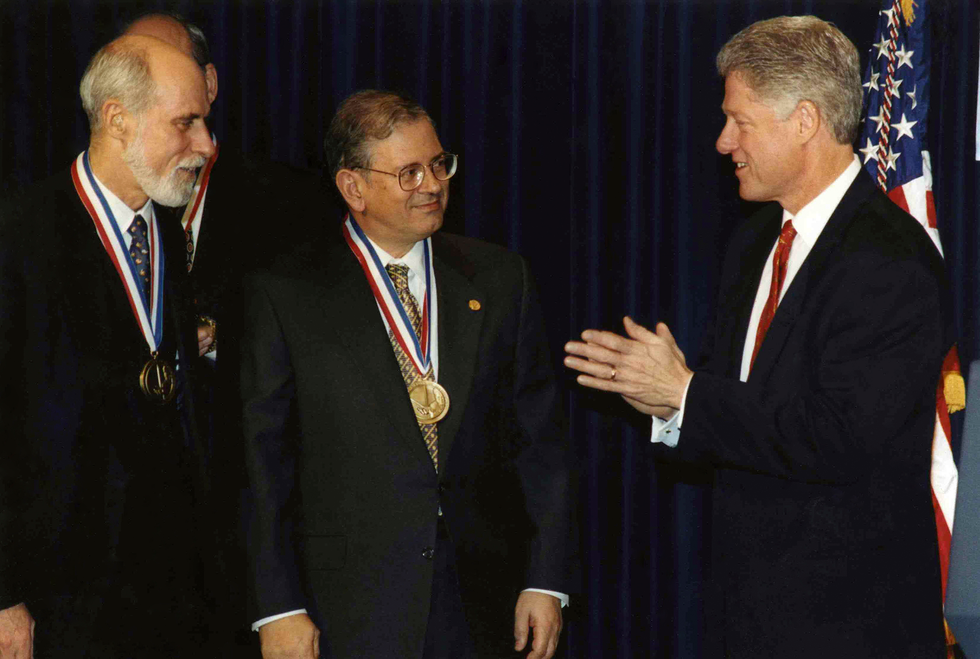
Kahn took the pencil from Cerf and started writing. “That’s his style,” Cerf says, “write as much as you can and edit later. I tend to be more organized, to start with an outline.”
“I told him to go away,” Kahn says, “and I wrote the first eight or nine pages. When Vint came back, he looked at what I had done and said, ‘Okay, give me the pencil.’ And he wrote the next 20 or 30 pages. And then we went back and forth.”
Finally, Cerf walked off with the handwritten version to give to his secretary to type. When she finished, he told her to throw that original draft away. “Historians have been mad at me ever since,” Cerf says.
“It might be worth a fortune today,” Kahn muses. The resulting paper, published in the IEEE Transactions on Communications in 1974, represented the basis of the Internet as we now know it. It introduced the Transmission Control Protocol, later separated into two parts and now known as TCP/IP.
A New World on an Index Card
A key to making this network of networks work was the Internet Protocol (IP) addressing system. Every new host coming onto the network required a new IP address. These numerical labels uniquely identify computers and are used for routing packets to their locations on the network.
Initially, Kahn assigned the network part of the IP addresses himself, keeping a record of who had been allotted what set of numbers on a single index card he carried in his shirt pocket. When that card began to fill up in the late ‘70s, he decided it was time to turn over the task to others. It became the responsibility of Jon Postel, and subsequently that of the Internet Assigned Numbers Authority (IANA) at the University of Southern California. IANA today is part of ICANN, the Internet Corporation for Assigned Names and Numbers.
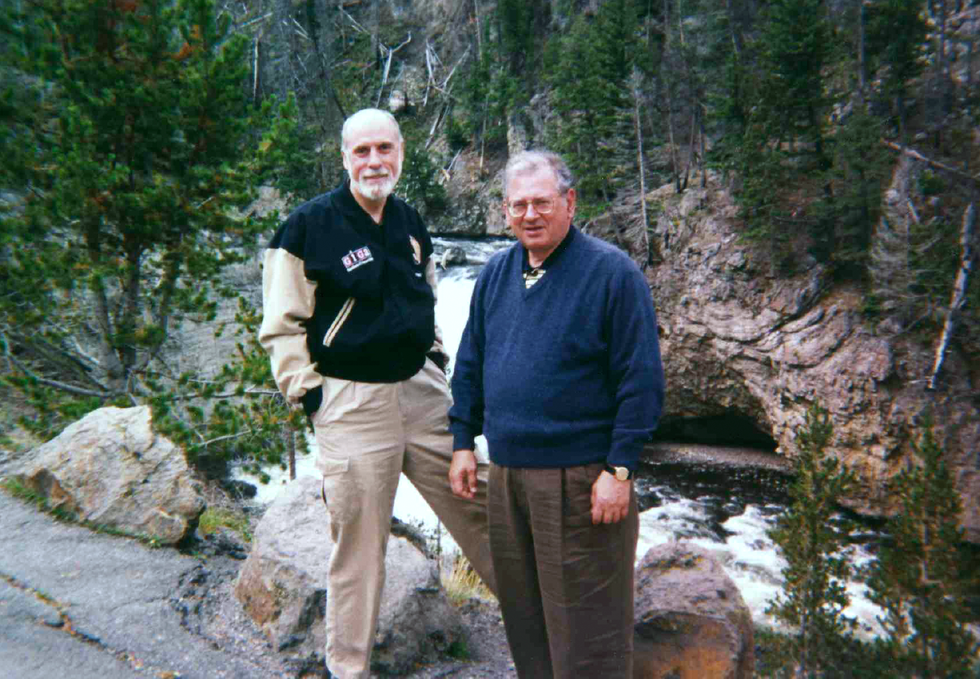
Kahn moved up the DARPA ladder, to chief scientist, deputy director, and, in 1979, director of the Information Processing Techniques Office. He stayed in that last role until late 1985. At DARPA, in addition to his networking efforts, he launched the VLSI [very-large-scale integration] Architecture and Design Project and the billion-dollar Strategic Computing Initiative.
In 1985, with political winds shifting and government research budgets about to shrink substantially, Kahn left DARPA to form a nonprofit dedicated to fostering research on new infrastructures, including designing and prototyping networks for computing and communications. He established it as the Corporation for National Research Initiatives (CNRI).
Kahn reached out to industry for funding, making it clear that, as a nonprofit, CNRI intended to make its research results open to all. Bell Atlantic, Bellcore, Digital Equipment Corp., IBM, MCI, NYNEX, Xerox, and others stepped up with commitments that totaled over a million dollars a year for several years. He also reached out to the U.S. National Science Foundation and received funding to build testbeds to demonstrate technology and applications for computer networks at speeds of at least a gigabit. CNRI also obtained U.S. government funding to create a secretariat for the Internet Activities Board, which eventually led to the establishment of the Internet Engineering Task Force, which has helped evolve Internet protocols and standards. CNRI ran the secretariat for about 18 years.
Cerf joined Kahn at CNRI about six months after it started. “We were thinking about applications of the Internet,” Cerf says. “We were interested in digital libraries, as were others.” Kahn and Cerf sought support for such work, and DARPA again came through, funding CNRI to undertake a research effort involving building and linking digital libraries at universities.
They also began working on the concept of “Knowbots,” mobile software programs that could collect and store information to be used to handle distributed tasks on a network.
As part of that digital library project, Kahn collaborated with Robert Wilensky at the University of California, Berkeley, on a paper called “A Framework for Distributed Digital Object Services,” published in the International Journal on Digital Libraries in 2006.
The Digital Object Emerges
Out of this work came the idea that today forms the basis of much of Kahn’s current efforts: digital objects, also known as digital entities. A digital object is a sequence of bits, or a set of such sequences, having a unique identifier. A digital object may incorporate a wide variety of information—documents, movies, software programs, wills, and even cryptocurrency. The concept of a digital object, together with distributed repositories, metadata registries, and a decentralized identifier resolution system, form the digital-object architecture. From its identifier, a digital object can be located even if it moves to a different place on the net. Kahn’s collaborator on much of this work is his wife, Patrice Lyons, a copyright and communications lawyer.
Initially, CNRI maintained the registry of Digital Object Identifier (DOI) records. Then those came to be kept locally, and CNRI maintained just the registry of prefix records. In 2014, CNRI handed off that responsibility to a newly formed international body, the DONA Foundation in Geneva. Kahn serves as chair of the DONA board. The organization uses multiple distributed administrators to operate prefix registries. One, the International DOI Foundation, has handled close to 100 billion identifiers to date. The DOI system is used by a host of publishers, including IEEE, as well as other organizations to manage their digital assets.
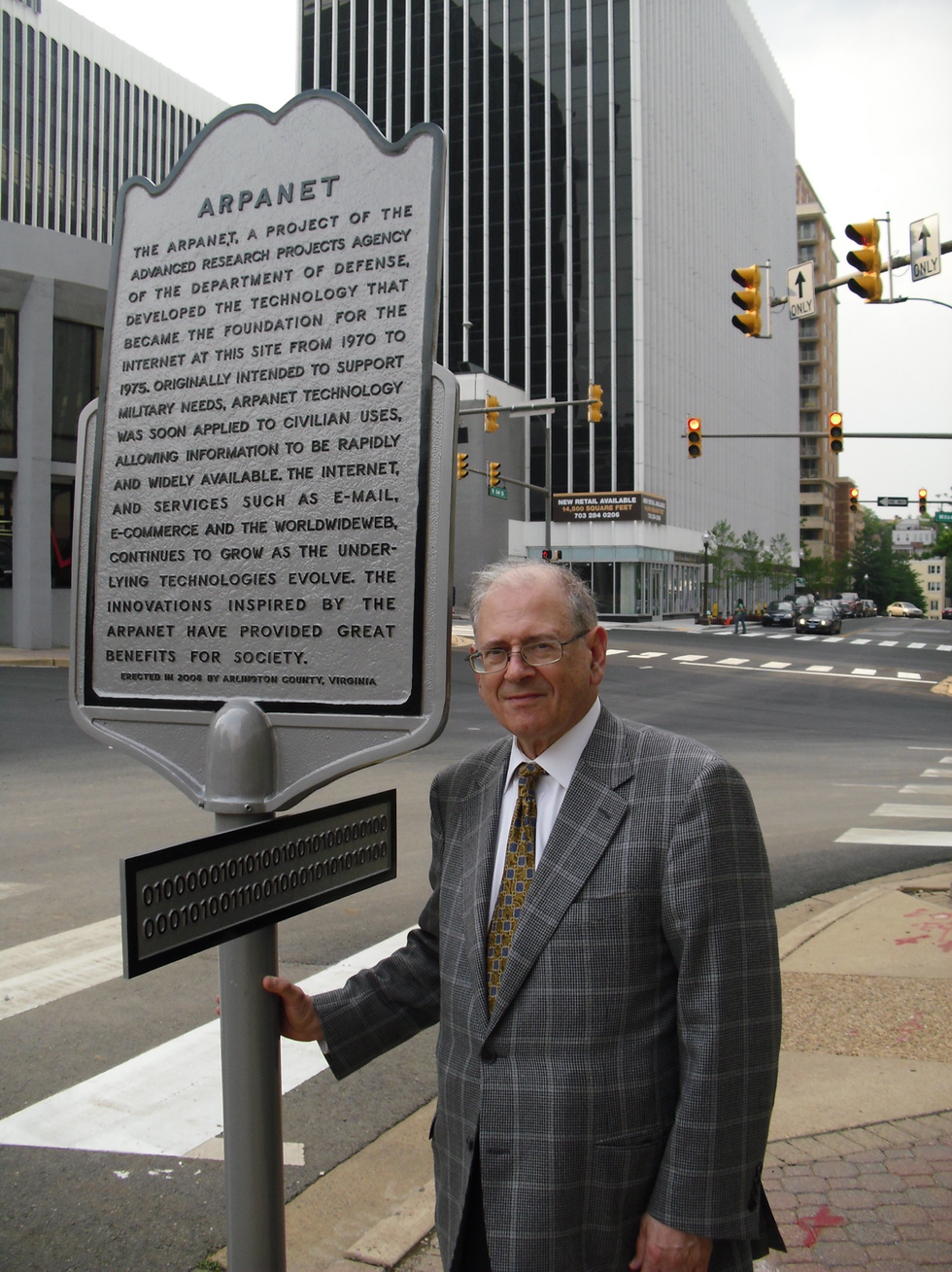
Kahn sees this current effort as a logical extension of the work he did on the ARPANET and then the Internet. “It’s all about how we use the Internet to manage information,” he says.
Kahn, now 85, works more than five days a week and has no intention of slowing down. The Internet, he says, is still in its startup phase. Why would he step back now?
“I once had dinner with [historian and author] David McCullough,” Kahn explains. Referring to the 1974 paper he wrote with Cerf, he says, “I told him that if I were sitting in the audience at a meeting, people wouldn’t say ‘Here’s what the writers of this paper really meant,’ because I would get up and say, ‘Well we wrote that and….’ “
“I asked McCullough, ‘When do you consider the end of the beginning of America?’” After some discussion, McCullough put the date at 4 July 1826, when both John Adams and Thomas Jefferson passed away.
Kahn agreed that their deaths marked the end of the country’s startup phase, because Adams and Jefferson never stopped worrying about the country that they helped create.
“It was such an important thing that they were doing that their lives were completely embedded in it,” Kahn says. “And the same is true for me and the Internet.”
This article appears in the May 2024 print issue as “The Great Interconnector.”
- The Do-or-Die Moments That Determined the Fate of the Internet ›
- The Portrait Artist ›
- Meet Mr. Internet: Vint Cerf ›
